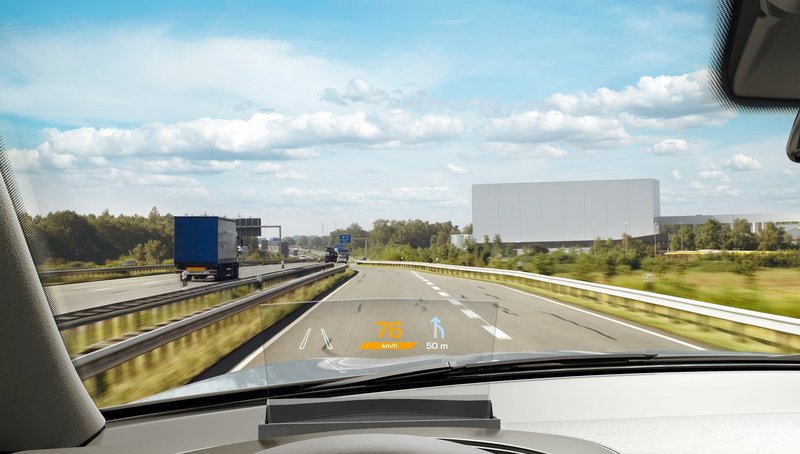Continental Launches Series Production of Combiner Head-Up Display for Mazda
- The combiner head-up display is an equipment option for the Mazda 2 and CX-3
- The compact version of the head-up display takes up much less space in the cockpit
- Ergonomic benefits ensure enhanced safety for drivers
Babenhausen, May 16, 2017. The technology company Continental has for the first time integrated its combiner head-up display (HUD) in models manufactured by the Japanese automotive manufacturer Mazda. Drivers of the new model variants 2/Demio and CX-3 can now choose this compact innovation as an equipment option.
“When developing our product innovations, we are particularly careful to ensure that as many drivers as possible benefit from them. The combiner head-up display is one such success story because, depending on the application, it takes up just a little more than half the space required for a conventional windscreen HUD, which makes it ideal for smaller or sportier cars like the Mazda 2 and CX-3. We are proud that the ergonomic benefits of our technology are now finding their way into these models,” says Dr. Frank Rabe, head of the Instrumentation & Driver HMI business unit at Continental.
While the conventional HUD uses the windscreen to mirror the information presented, the combiner HUD uses a small, transparent plastic disc – or “combiner” – positioned in front of it. This means that the windscreen does not need to be integrated in the optical path, which means in turn that the system takes up much less space in the cockpit and enables a highly compact and flat design. Depending on the application, the combiner solution operates with just a single mirror inside it. The combiner HUD offers the same level of functionality as the conventional system because the full-color instrument display also appears over the end of the car’s engine hood. As a result, the driver’s eyes remain fixed on the road so that both the traffic and any important information remain simultaneously within the driver’s field of vision and the “blind driving” phase while the driver processes the information on the instrument is significantly reduced.
Thanks to its suitability for compact vehicle models, the combiner HUD can be installed in several vehicles of an OEM and is helping to bring this new human-machine interface technology to more and more people. While the windshield HUD can now be found as an equipment option in the upper mid-size class as well, the combiner HUD is also available for smaller volume models.

Ilona Tzudnowski
Media Spokesperson Software Architecture and Network Solutions
Continental Automotive
